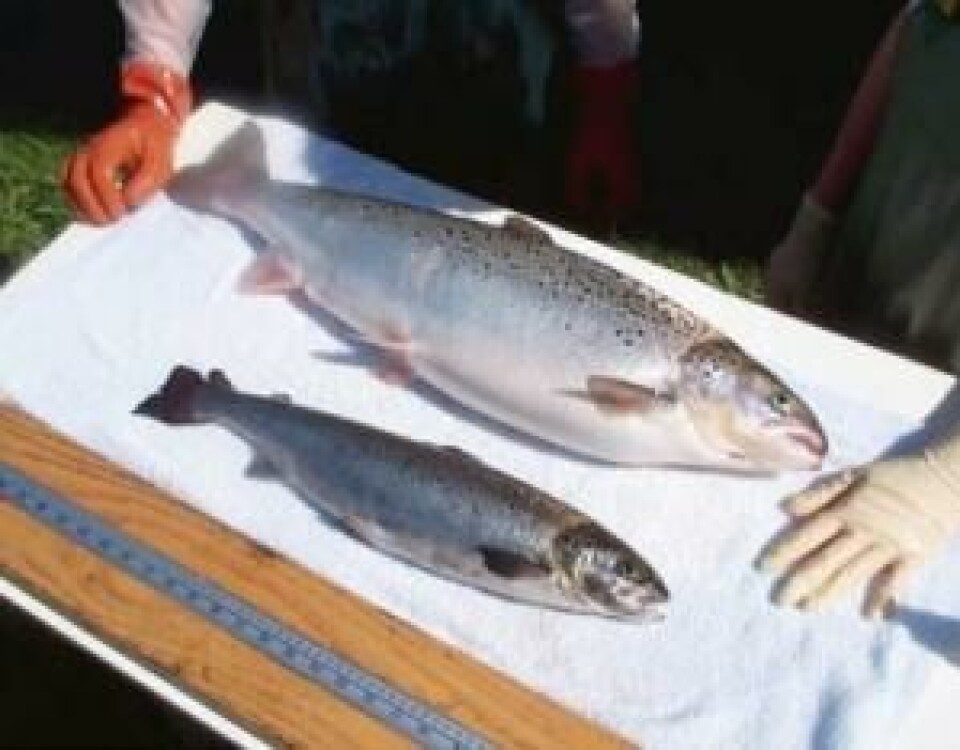
More objections to GE salmon
In an article in the Campbell River Mirror today, scientist Robert Wagner from the Vancouver Island University provides some assurances that Genetically Modified (GM) foods have been declared no riskier to consume than other, conventionally improved foods by a series of government agencies such as the WHO, the American Medical Association, the U.S. National Academy of Sciences, the British Royal Society and “every other respected organization that has examined the evidence”. But a recent market report by the Canada Organic Trade Association mentioned in the Vancouver Sun newspaper by reporter Randy Shore suggests that more than half of the consumers in British Columbia surveyed said that they want to avoid GMO’s in their food, and two thirds of them buy organic food every week. These numbers are found to be lower in the rest of Canada.
Add to this picture the fact that conventional salmon farmers everywhere have expressed concerns about being associated with the production of genetically modified fish, then the following article by Karin Klein of the Los Angeles Times makes some sense- she suggests that someone has to say no to these products, and she applauds Kroger and Safeway for their decisions, suggesting that “They join several other chains, including Target, Whole Foods (of course) and Trader Joe’s. Now let’s hope the holdouts, such as Costco, do the same”;
The Food and Drug Administration has not yet decided whether to approve the salmon, with DNA retooled so that the fish grow twice as fast as conventional salmon. But the agency already has decided that the fish are safe to eat and are very unlikely to pose an environmental threat if they’re grown, as planned, in land-locked tanks. The FDA’s final decision on the fish has been expected for a long time, and there is speculation that the agency has been holding off mainly because it knows that the public is inclined to look suspiciously on the new product.
The fish would be raised in the mountains of Panama nowhere near the ocean, and they would be rendered sterile and all of them female, to avoid mating. However, the pens would be right next to a river, and the technology for producing sterile fish is not perfect -- it would fail in up to 5% of the animals. Even this shaky picture relies on the salmon-farming operation being run with maximum care at all times, with no sloppiness, no shortcuts taken. That leads to additional questions of how the underfunded FDA is planning to inspect, continuously and scrupulously, to ensure that the fish farm is doing everything as promised?
The fear is that the genetically modified salmon could breed with wild salmon and out-compete them for resources. Supporters of the product say that is incredibly unlikely to happen, but the past has taught us -- as with the possibility of earthquakes and tidal waves big enough to compromise the Fukushima nuclear plant -- that nature has ways of throwing surprises at us, especially in an arena as untested as this one.
Another consideration, which the FDA doesn’t talk about, is the opening of a door. This one operation might sound good to the agency (though it sounds like a potential environmental problem to me), but it would be a very small operation. The fish from this one farm would be a blip on the fish-market scene. However, once the U.S. market has been opened to these fish, the business would grow, the proposals would go on and it’s practically a given that not all of the subsequent operations would be carefully designed and run.
Consumer groups have taken matters into their own hands by appealing to food markets not to carry the fish, and they’re obviously having some notable successes. The other markets should fall in line; they don’t need these salmon in their fish departments in order to succeed, and, in fact, they stand a good chance of turning off consumers who worry about making over the DNA of an animal that, for all the fish farms, is essentially a wild creature.






















































